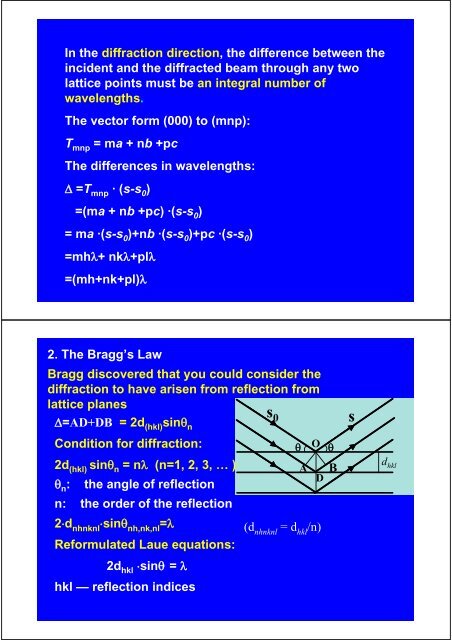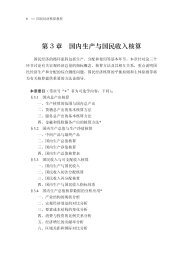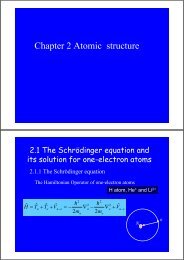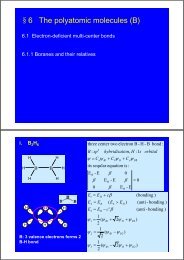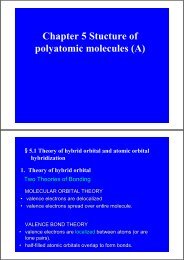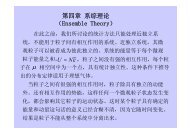Chapter 7 Introduction to Crystallography
Chapter 7 Introduction to Crystallography
Chapter 7 Introduction to Crystallography
Create successful ePaper yourself
Turn your PDF publications into a flip-book with our unique Google optimized e-Paper software.
In the diffraction direction, the difference between the<br />
incident and the diffracted beam through any two<br />
lattice points must be an integral number of<br />
wavelengths.<br />
The vec<strong>to</strong>r form (000) <strong>to</strong> (mnp):<br />
T mnp = ma + nb +pc<br />
The differences in wavelengths:<br />
Δ =T mnp ·(s-s 0 )<br />
=(ma +nb +pc) ·(s-s 0 )<br />
= ma ·(s-s 0 )+nb ·(s-s 0 )+pc ·(s-s 0 )<br />
=mhλ+ nkλ+plλ<br />
=(mh+nk+pl)λ<br />
2. The Bragg’s Law<br />
Bragg discovered that you could consider the<br />
diffraction <strong>to</strong> have arisen from reflection from<br />
lattice planes<br />
Δ=AD+DB = 2d (hkl) sinθ n<br />
s 0<br />
s<br />
Condition for diffraction:<br />
2d (hkl) sinθ n = nλ (n=1, 2, 3, … )<br />
θ n : the angle of reflection<br />
n: the order of the reflection<br />
2⋅d nhnknl<br />
⋅sinθ nh,nk,nl<br />
=λ<br />
Reformulated Laue equations:<br />
2d hkl ⋅sinθ = λ<br />
hkl — reflection indices<br />
θ O θ<br />
A B<br />
D<br />
(d nhnknl<br />
=d hkl<br />
/n)<br />
d hkl


